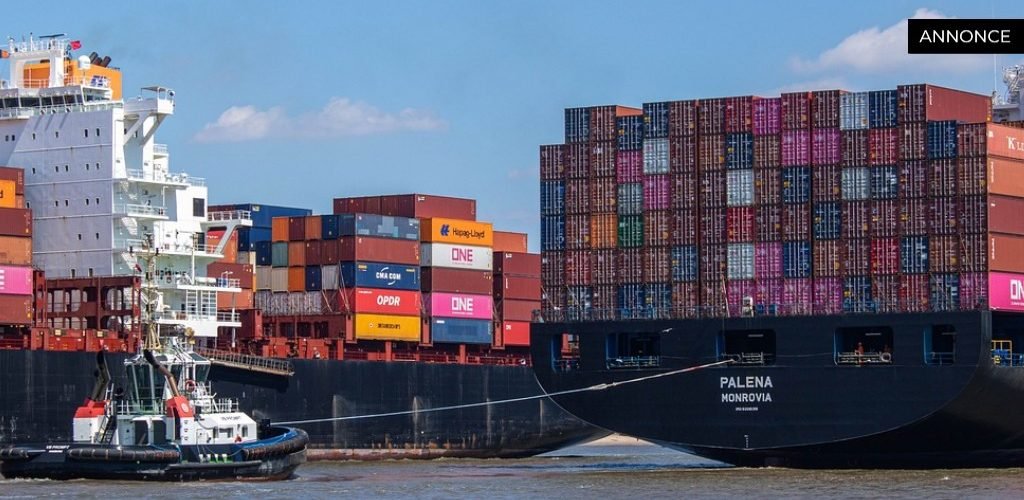Table of Contents
Introduction to sea air freight transport
In today’s fast-paced global supply chain environment, efficiency and speed are more crucial than ever. Sea air freight, a hybrid logistics solution, combines the economical advantages of sea freight with the speed of air freight. This multimodal approach is gaining popularity as it enables businesses to maintain cost-effectiveness while ensuring timely delivery. Understanding how sea air freight works and its benefits can significantly enhance your logistics strategy.
Sea air freight transport offers a balanced solution for shipments that might not be urgent but require quicker delivery than traditional sea freight. Typically, goods are transported by sea to an intermediate hub and then flown to the final destination. This method provides a sustainable middle ground, ensuring timely delivery without the high costs associated with air freight alone.
Global trade demands versatility, and the combination of sea and air freight meets this need efficiently. From electronics to fashion, various industries can benefit from this hybrid solution, leveraging its flexibility to meet market fluctuations. As businesses aim to streamline their logistics, the role of sea air freight becomes increasingly pivotal.
Key advantages of sea air freight
Adopting sea air freight solutions brings several notable benefits to the logistical table. Among the primary advantages are cost savings, reduced transit times, and improved environmental sustainability. The ability to combine the economic benefit of sea shipping with the speed of air transport can make a significant difference in a company’s supply chain management.
Cost efficiency is a major driving force behind choosing sea air freight. Air freight alone can be prohibitively expensive, especially for large quantities of goods. Sea air freight allows businesses to cut expenses by up to 50% compared to air freight alone, making it an attractive option for those who want to balance cost and speed.
Reduced transit times are another critical advantage. While sea freight can take weeks, sea air freight typically reduces delivery times to just over a week. This faster transit time means that goods reach their destination much quicker than by sea alone, crucial for perishable items or time-sensitive products.
Environmental sustainability is becoming a significant consideration in logistics. Sea air freight tends to produce lower carbon emissions compared to air freight, aligning with green logistics initiatives. By reducing air transport usage and leveraging ships for the longer leg, businesses can significantly lower their carbon footprint, promoting sustainable practices.
Innovative solutions transforming sea air freight
The integration of technological advancements and innovative logistics solutions is vital in enhancing sea air freight efficiency. From advanced tracking systems to AI-driven route optimization, various technological innovations are transforming this sector, making it more efficient and reliable.
Real-time tracking has become a game-changer for sea air freight. Utilizing GPS and IoT (Internet of Things) devices enables shippers to monitor their cargo throughout the entire journey. This transparency not only increases security but also allows for quicker response times in the event of delays or disruptions.
AI and machine learning are revolutionizing route planning. These technologies analyze large datasets to predict potential delays and identify the most efficient routes. Using AI for prediction models helps logistics providers optimize delivery schedules and minimize transit times.
Additionally, blockchain technology is improving transparency and reducing paperwork. By creating a decentralized ledger, all stakeholders in the supply chain can access accurate information about the shipment’s status. This minimizes errors and speeds up the document verification process.
Efficient logistics solutions enhance sea air freight operations significantly. Companies can leverage these innovations to improve their logistics efficiencies, resulting in cost savings and improved customer satisfaction.
Choosing the right logistics partner for sea air freight
Selecting the right logistics partner plays a crucial role in the success of implementing sea air freight solutions. Businesses need a partner with extensive experience, a global network, and the technological capabilities to provide reliable and cost-effective services.
Experience in handling multimodal transportation is essential. A seasoned logistics partner understands the complexities of coordinating between sea and air freight, managing customs clearances, and ensuring that cargo transitions smoothly between different modes of transport. Look for partners with a proven track record in this domain.
A global network is another critical factor. The logistics partner should have a well-established presence in key global markets, ensuring smooth transitions and timely deliveries. A strong network can also help navigate potential challenges like port congestion or airspace restrictions, minimizing delays.
Technological capabilities are increasingly vital. Choose a logistics provider that utilizes advanced technologies like real-time tracking, AI for route optimization, and blockchain for transparency. These tools enhance reliability and efficiency, ensuring that you get the most out of your sea air freight solutions.
By carefully selecting a logistics partner with these attributes, businesses can capitalize on the benefits of sea air freight, optimizing their supply chain to meet market demands effectively. For more information on effective logistics solutions, explore further details on using a comprehensive approach to your shipping needs here.
Customizing sea air freight solutions for different industries
Sea air freight is not a one-size-fits-all solution. Different industries have unique requirements, and customizing this hybrid solution can provide significant advantages. From high-tech to fashion, sea air freight can be tailored to meet specific industry needs effectively.
The electronics industry frequently relies on sea air freight for its balance of speed and cost-effectiveness. Tech products often have a short lifecycle and need to be delivered promptly to global markets. Sea air freight facilitates quick and economical distribution, helping companies maintain market competitiveness without incurring high shipping costs.
Fashion retailers also benefit immensely from sea air freight. The fashion industry operates on tight seasonal schedules, requiring fast turnover times. By utilizing sea air freight, retailers can ensure timely deliveries to stores worldwide, keeping up with seasonal trends and customer demand.
Pharmaceuticals and healthcare products can also capitalize on this transport method. Given the sensitive nature of these goods, it is crucial to maintain strict control over environmental conditions and timely delivery. Sea air freight ensures that pharmaceuticals are transported efficiently and safely, minimizing exposure to adverse temperature changes.
By customizing sea air freight solutions to meet the specific needs of various industries, businesses can enhance their supply chain efficiency and ensure that goods reach their destinations promptly and cost-effectively.





